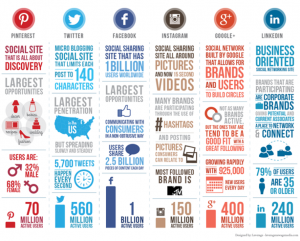Should your marketing operations be centralized, or should field offices be autonomous? Contributor Debbie Qaqish explores the risks and benefits of different approaches.

Marketing operations (MO) as a capability has exploded onto the scene because of fast-changing technology, the need for a more transparent, efficient, and accountable view of marketing and big-time pressure from the C-suite for marketing to contribute to the bottom line.
Three years ago, very few companies had a dedicated marketing operations team. Today, a dedicated marketing operations capability is more common and creates true competitive advantage for those companies who are optimizing this capability.
At the same time, we are still in the early days in the optimization of MO. You can talk with 100 different companies and they will have 100 different ways to structure and enable marketing operations.
This is especially true in global enterprises. I’ve worked with several global organizations over the last 18 months and their approach and structure for marketing operations varies widely.
One particular challenge facing organizations today is defining the roles of central marketing versus field marketing in owning the marketing operations capability. This article will review:
- The marketing operations capability.
- Extreme case 1: Centrally-owned MO capability.
- Extreme case 2: Field-owned MO capability.
- Customer focus as the wild card.
The marketing operations capability
Let’s look at the charter for MO, the definition of a capability and key functions of a MO group. The charter of a marketing operations team is to help run marketing like a business by driving efficiency and effectiveness measures that help produce credible financial returns.
I don’t buy into the definition of MO just being about the technology. IT can do that. We must take more of a unicorn approach (marrying marketing and technology) in defining the charter of marketing operations.
A capability is a packet of people, process and technology that drives a business result based on a given strategy. In its most basic form, the MO capability can be expressed most simply as a set of functions including program management, analytics/reporting, training and education, vendor management, technology management, data management and marketing process management. I would also add project management, as well as budgeting and forecasting, to the MO capability.
Extreme case 1: A centrally-owned MO capability
In the extreme case 1 of MO, the capability is owned 100% by a central marketing organization.
In this scenario:
- The company has one instance of marketing automation and one instance of CRM.
- The central marketing team creates programs/campaigns, which are tweaked by field marketing for local execution.
- Dedicated analysts review global performance and provide real-time feedback to improve metrics and to create best practices.
- Marketing, sales and executives receive training and education on the practices of digital transformation and what we call Revenue Marketing — the combined set of strategies, processes, people, technologies, content and result measurements across marketing and sales.
- The technology stack is tightly managed, as are the vendors, with an eye to global efficiency and optimization.
- Data is centrally managed and oftentimes the key project is data consolidation for improved business use.
- Finally, the dedicated central team is obsessed with process improvement and often focuses on key processes such as programs, campaigns, quality assurance (QA), and lead management.
Pros and cons
The pros of a centrally owned MO capability include improved time to results, better overall performance and optimization of systems and processes. As a global organization is rolling out Revenue Marketing practices, having a dedicated central group with no other job but marketing operations leads to better performance in a shorter period of time. In addition, because a central group has dedicated technology users, they are able to optimize the use and integration of systems. This is often an overlooked element in performance and makes a huge difference.
The cons of a centrally owned MO capability include turf wars and continued disintermediation between corporate and field marketing leading to lower performance of programs and campaigns. This occurs because corporate marketing is typically less knowledgeable about the customer in global markets and thus programs and campaigns may not be on track or may not be responsive enough.
The turf wars occur most frequently around a region wanting their own marketing automation system so they can do what they perceive is best for their region.
Extreme case 2: Field-owned MO capability
In the extreme case 2 of MO, the majority of the MO capability lives in the field. In this scenario, there are at least multiple instances of marketing automation and probably CRM as well. Other system redundancies are also present, because each field region acts as an independent hub.
I see this situation develop most often when a company does an initial roll-out and they want to get the capability into the company ASAP. This makes sense in some cases where the customer knowledge is very field dependent. It can be a formula for quick wins. In this scenario, it falls on the field marketing team to become technology experts, data scientists, analysts and process gurus.
Pros and cons
The pros of the field-owned MO capability has to do with the speed of an initial roll-out, especially when you don’t know what you don’t know. The other pro is the sense of ownership and responsibility by the field marketing team. Oftentimes this can equate to better conversion rates with the sales team as the marketing team is local.
The cons have to do with the fact that over time the field marketing team will lose their edge of customer and sales understanding because they’re having to dedicate so much time to analytics, data, process improvement, and systems optimization.
Customer focus as the wild card
We are still in the formative days of an optimal marketing operations capability. We have to applaud all the global companies who have started this journey with a sense of experimentation and continuous improvement.
Every company is different and the key element is to be moving in the direction of a MO capability that will enable marketing to be revenue performers. However, there is one uniting factor in this MO puzzle — customer focus.
Today’s B2B organization is finally getting on board with the idea that customers come first and that a competitive advantage can be created based on the strength of a customer relationship. So the key consideration for determining where the MO capability should live is the company’s customer intimacy strategy.
As we sit here in 2018 B2B companies are jumping onboard with a customer-first (vs. product-first) strategy. This requires one line-of-sight into the customer journey for the life of the customer, which requires a field capability.
This article compares two extremes so that we can visualize the possibilities for the MO capability. My crystal ball tells me it will be some time before we have consensus on this topic and quite frankly, I don’t think we need consensus. What we do need is an intentional review and understanding of how the MO function enables the promise of results-oriented marketing.
Opinions expressed in this article are those of the guest author and not necessarily Marketing Land. Staff authors are listed here.
Marketing Land – Internet Marketing News, Strategies & Tips
(116)







